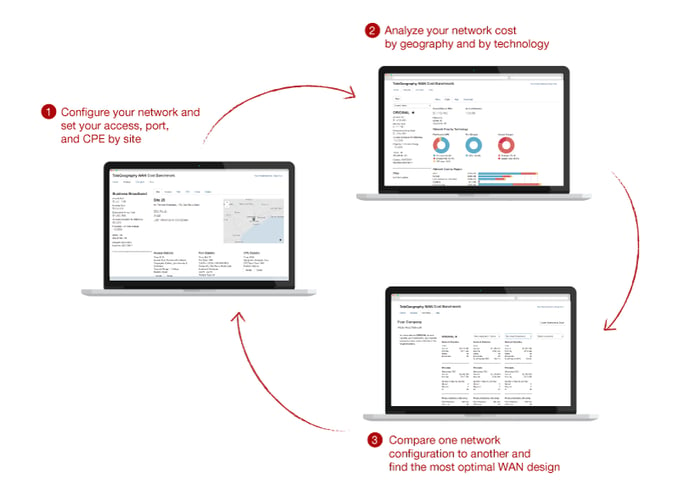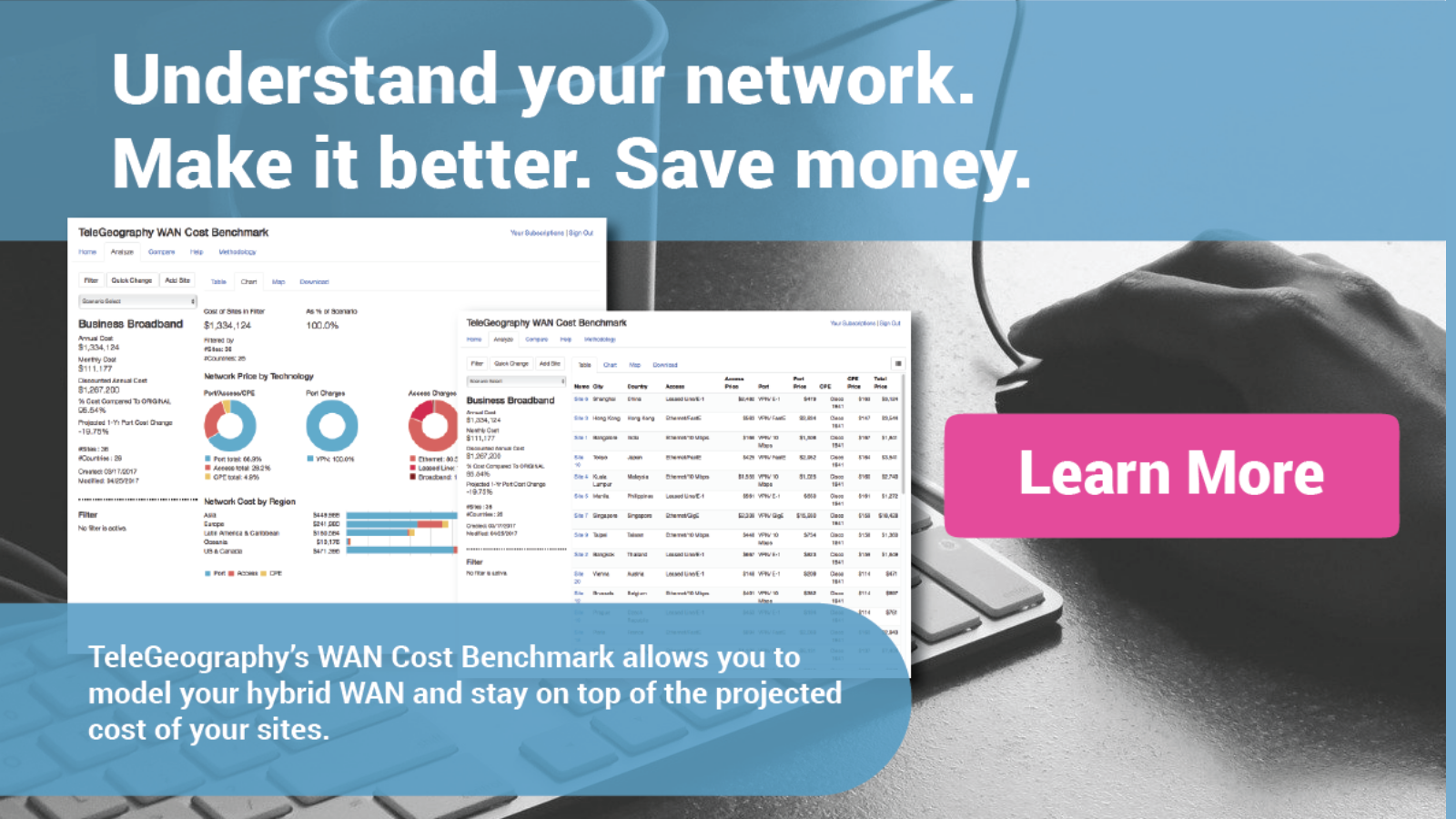The enterprise wide area network (WAN) market is in a state of flux, forcing multinational corporations to rethink how they design and source their networks.
Many corporate IT infrastructure teams have reduced or eliminated their use of private MPLS networks and replaced them with SD-WAN-enabled hybrid networks, utilizing more cost-effective internet connections.
Average enterprise product mix for WAN sites (2018-23)
.png?width=1200&height=640&name=Average%20enterprise%20product%20mix%20for%20WAN%20sites%20(2018-23).png)
Source: WAN Manager Survey © 2024 TeleGeography
Likewise, corporate data traffic is often now connecting to cloud-based XaaS products rather than on-premises data centers. While most enterprises still have data centers on premises, most have also moved data to the cloud.
Enterprise data center locations (2023)
.png?width=1200&height=581&name=Enterprise%20data%20center%20locations%20(2023).png)
According to our latest WAN Manager Survey, many enterprises report that they plan to eventually have all data centers in the cloud, but the transition will take some time. Workers accessing corporate tools have also moved off campus as home and remote work have increased.
These new configurations put pressure on legacy “castle and moat” network security postures.
In the past three years, Secure Access Service Edge (SASE) has emerged as the network security framework many enterprises are adopting to absorb these changes and remain safe.
However, cost optimization has been the biggest difficulty for enterprises implementing SASE.
What were your biggest challenges in implementing SASE? (2023)
.png?width=700&height=397&name=What%20were%20your%20biggest%20challenges%20in%20implementing%20SASE%3F%20(2023).png)
Source: WAN Manager Survey © 2024 TeleGeography
Network decision-makers are under a lot of pressure to ensure their network can connect to cloud resources efficiently, utilize software-defined networking to streamline WAN performance, modernize network infrastructure, and maintain network security—all while keeping costs low, or even reducing them.
With connectivity costs varying across geography and over time, staying on top of network spend isn’t a one-time job. It’s an ongoing saga.
That’s where network benchmarking comes in.
Benchmarking is all about taking stock of your network against your cost, security, and performance goals.
Benchmarking is all about taking stock of your network against your cost, security, and performance goals.
Backed by TeleGeography's pricing databases with over 5.7 million data points, our unique WAN Cost Benchmark tool allows you to model your hybrid WAN expansion plans and stay on top of the projected cost of your new sites.
In a few clicks, customers can add new sites to their network, find out how much these new sites will cost, compare this network to other scenarios, and find a plan that delivers the best balance of capacity and cost.

Want to learn more?
You can get a full overview of this tool over here.
Greg Bryan
Greg is Senior Manager, Enterprise Research at TeleGeography. He's spent the last decade and a half at TeleGeography developing many of our pricing products and reports about enterprise networks. He is a frequent speaker at conferences about corporate wide area networks and enterprise telecom services. He also hosts our podcast, TeleGeography Explains the Internet.





